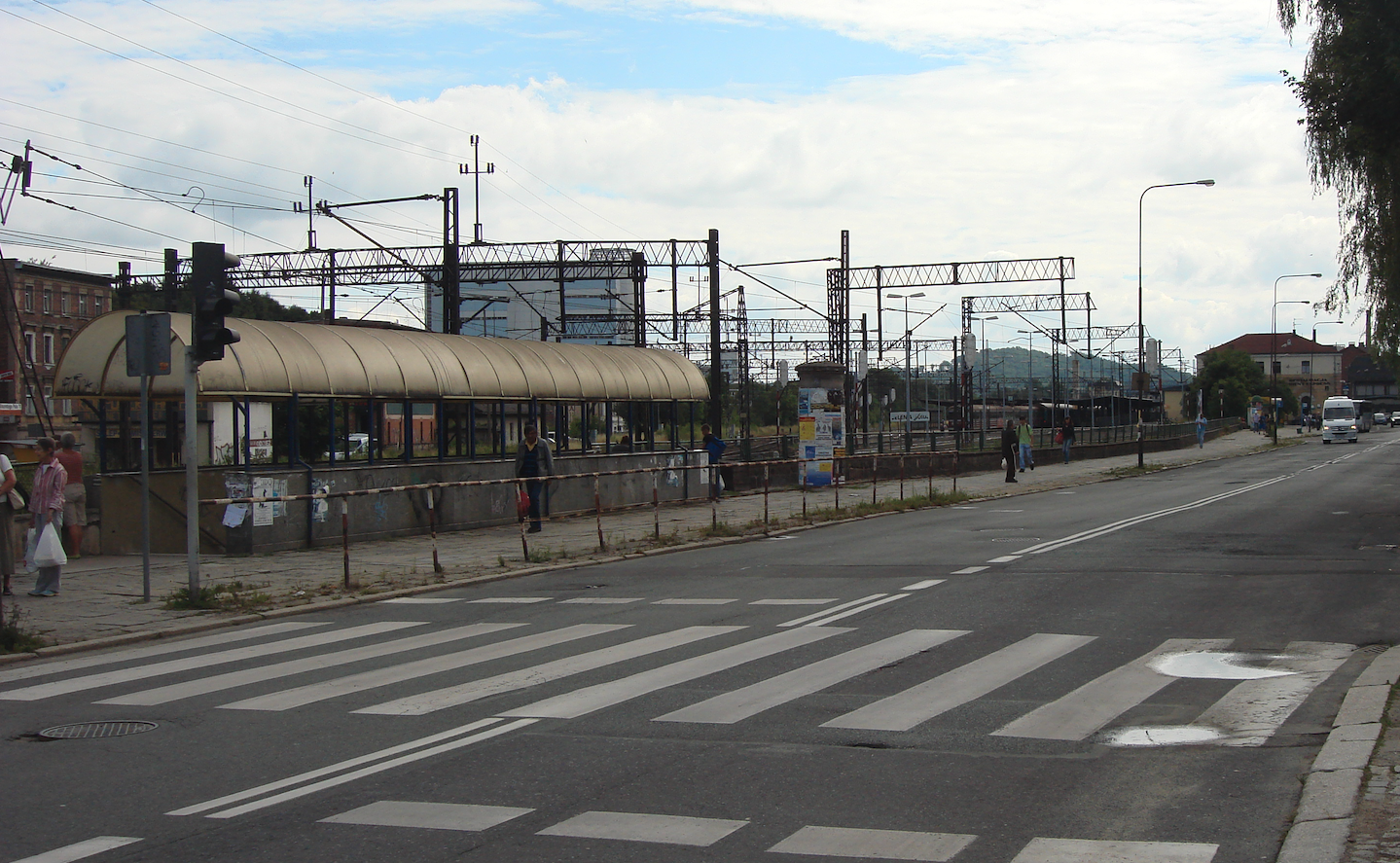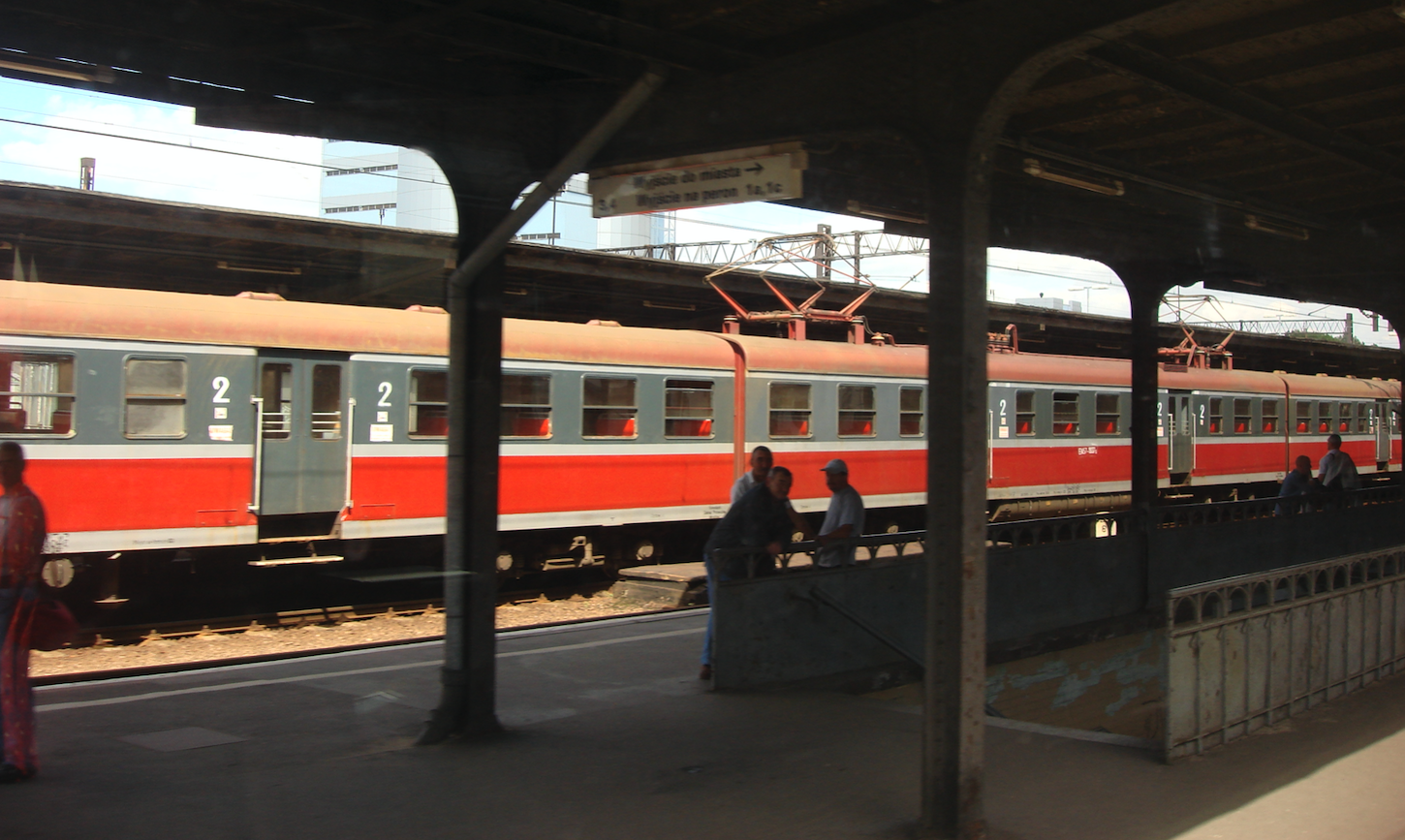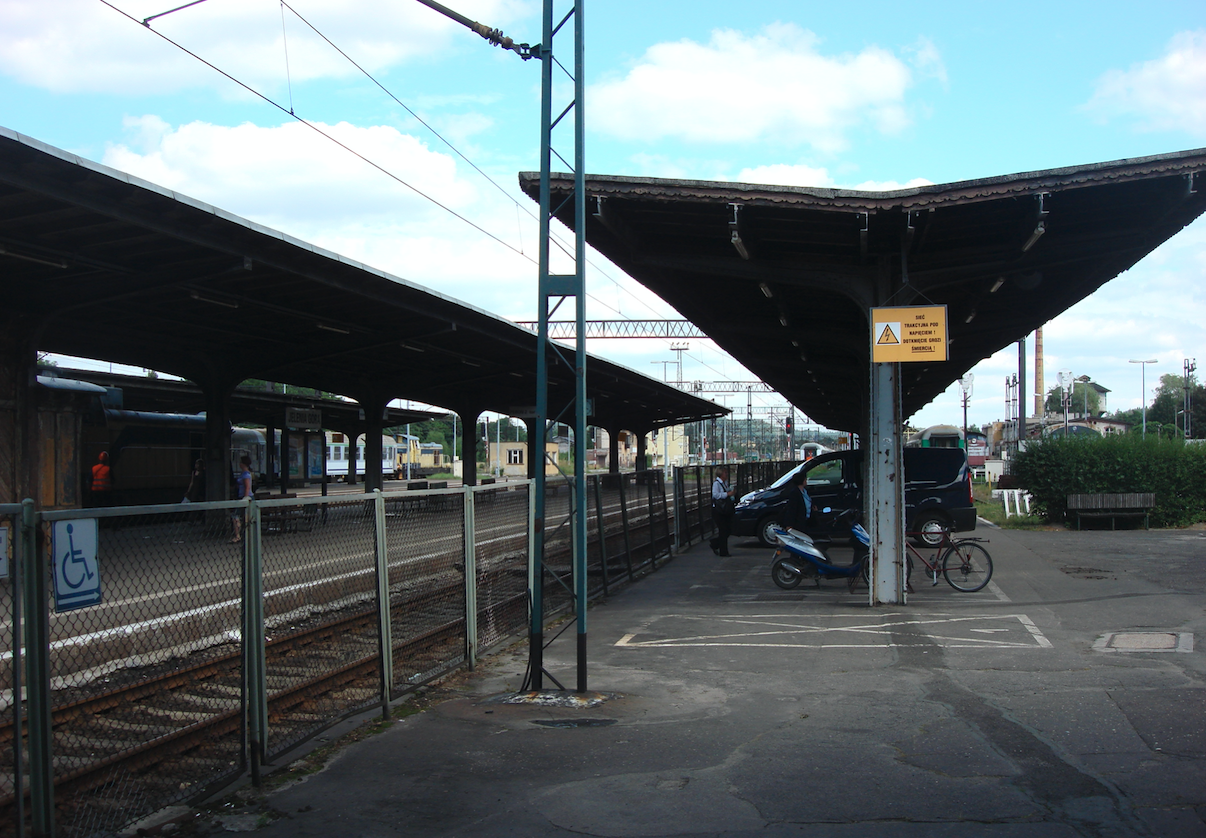Jelenia Góra. 2021-11-25
Jelenia Góra railway station. 2010 year.
The Jelenia Góra railway station is the most important station in the Western Sudetes region. The station is located east of the city center. The center of Jelenia Góra is about 2 km away. The station is located at 1 Maja and Krakowska Streets. On the other, northern side, the station is limited by Wincentego Pola Street. Due to the location of the station and the topography, the station plain developed towards the east.




The history of the Jelenia Góra station.
Jelenia Góra station was established in 1866. The Jelenia Góra - Wrocław railway connection was launched in 1868. The station building was built in 1866 and has never been presentable. There were passenger and luggage ticket offices in the small hall. There was a small waiting room, toilet, restaurant. It quickly turned out that the object was too small. That is why another building was built in which the post office was also placed.
The station building and platforms were expanded once again in 1882 with the launch of a new line from Kowary. In 1891, a new route to Szklarska Poreba was launched. In 1897, a tram line was connected to the station from the city center and it was the first tram line in the city.
The Germans launched the electric traction in February 1923, on the most important route Wałbrzych - Zgorzelec. In 1925, the routes towards Szklarska Poręba and Karpacz were also electrified. It was a 15 kV / 16 2 / 3Hz network. It is worth remembering that in May 1945, after the entry of the Russian troops, the German electric traction was dismantled and taken to Moscow. Malicious Russians said that they are taking traction for chrome plating. In 1966, Jelenia Góra was electrified again, but already with the Polish 3 kV network. In 1987, the section Jelenia Góra (Dębowa Góra) - Szklarska Poręba Górna (PKP) was electrified. There were plans to electrify all routes, which did not happen.
In 1929, a direct connection was established from Wałbrzych via Jelenia Góra, Zgorzelec to Berlin.
From 1946, already in Poland, night trains were launched from Warsaw via Jelenia Góra with sleeping cars to Karpacz, and from 1953 to Szklarska Poreba.
In 1984, the operation of steam locomotives at the Jelenia Góra junction was completed. The last trains with steam locomotives led the depots to Lwówek Śląski and Zebrzydowa. The SM42, SU45, and SU46 diesel locomotives were introduced on non-electrified routes.
Station now.
Jelenia Góra station currently has the rank of a regional station. It is a junction station because it combines as many as four railway routes No .: 274, 283, 308 and 311. The station has 4 platforms and tracks with electric traction.
Jelenia Góra station is on the main route from Wrocław to Zgorzelec. Three local railway routes depart here: towards Mysłakowice and Karpacz, Szklarska Poręba and Lwówek Śląski. Currently, there is passenger traffic in only one of these directions, to Szklarska Poreba. The running of trains on the remaining lines has been suspended. The passenger station is located in the western part.
In the central part of the Jelenia Góra station, there are holding tracks for passenger trains and electric locomotives. The eastern part, from the Wałbrzych side, is a goods station. There is also a railway siding of PKP Energetyka and sheds for draisines. The main control box "JG" is located in the central part of the station. The control room "JGm1" is located in the eastern part of the station and is used for cargo train maneuvers.
The track system of the station is very complex. The station has a locomotive shed, two control rooms and buildings of numerous railway services. Two water towers have survived. There was a fan-shaped locomotive, but little remains of it. The building is gone. The remaining idle turntable and the cleaning channel for boiler furnaces. There was also space for coal. There is a hump in the eastern part, but it is unused and its devices have been dismantled.
The last major renovation of the station building was carried out in the period 2015 - 2017. Much of the station building was occupied by the "Skylab Music Club". There is a place for car rental in the building. The toilets are modern and paid. For a fee, you can use the shower (with your own gel and towel). The station is adapted for disabled people. The checkout counters have low tops. In addition to the stairs, there are ramps and elevators to the platforms.
There are few parking spaces at the station, as there is no land for a large parking lot. In front of the station there is a taxi rank and a bus stop for public transport. In 2019, the Jelenia Góra station served approximately 2,500 passengers a day in the summer. In 2021, in the summer period, Jelenia Góra had 60 passenger connections a day, and in the winter period there were 35 connections.
Platforms.
At the Jelenia Góra station, already in the 19th century, it had four platforms. In 1910, the platforms were roofed and an underground passage was built. Unfortunately, the underpass does not connect to Wincentego Pola Street, from the northern part of the station. Therefore, in around 1970, a second underpass was built in the western head of the station, connecting 1 Maja Street with Wincentego Pola Street. In the period 2014 - 2017, the platforms were renovated. The platforms have been raised and their surfaces are new. The shelters were renovated.
1 The platform is 170 m long and 0.55 m high.1a The platform is 180 m long and 0.45 m high.1b The platform is 120 m long and 0.50 m high. 2 The platform is 430 m long and 0.75 m high. 3 it is 350 m long and 0.75 m high. 4 The platform is 250 m long and 0.75 m high.
Written by Karol Placha Hetman
